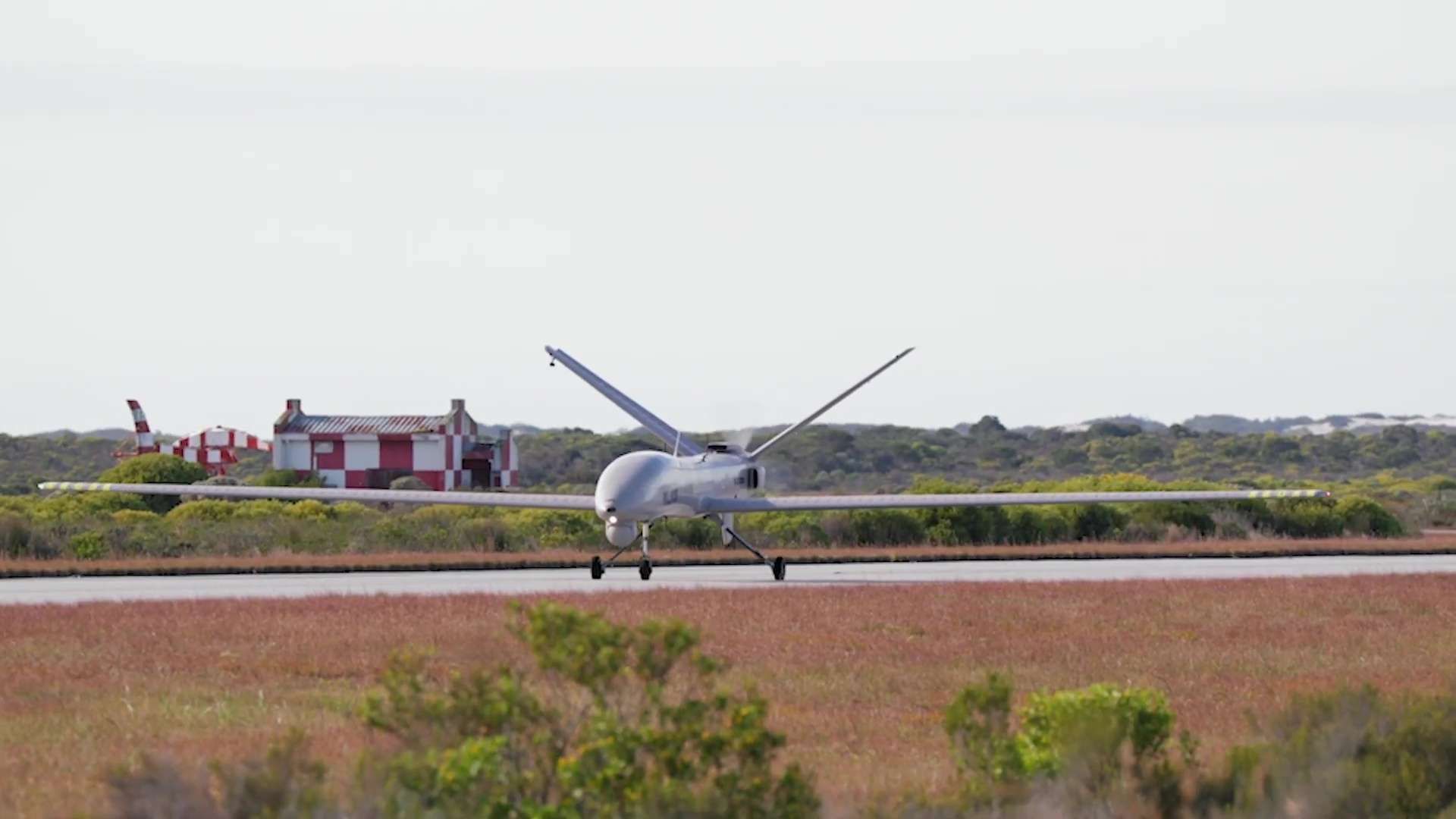Breaking news
With the new AeroForce 380 UAV, Milkor targets the Global Top 10 medium-range maritime UAVs.
At the ILA Berlin Air Show 2024, the South African company Milkor, in cooperation with the German company Aerodata AG, presented the AeroForce 380, a new Medium Altitude Long Endurance (MALE) unmanned aerial system (UAS) optimized for maritime surveillance. Built on the Milkor 380 platform, the AeroForce 380 is expected to be among the top ten MALE UAVs globally in terms of operational capabilities for maritime applications.
Follow Army Recognition on Google News at this link

Built on the Milkor 380 platform, the AeroForce 380 is expected to be among the top ten MALE UAVs globally in terms of operational capabilities for maritime applications. (Picture source: Army Recognition)
The partnership between Milkor and Aerodata, initially announced at the Paris Air Show in 2023, resulted in the development of this new unmanned system, aptly named Aeroforce 380. As its name suggests, this new UAV combines the performance of the Milkor 380 with the maritime surveillance sensors provided by Optimare Systems, a subsidiary of Aerodata. This combination enhances the capabilities of the Milkor 380, equipping it with technology for civilian applications, particularly in maritime monitoring and data collection.
The AeroForce 380, like the Milkor 380, is classified as a MALE system but also has the capability to operate within the Low Altitude Long Endurance (LALE) segment. This dual capacity, along with the Milkor's ability to accommodate additional modular sensor payloads such as airborne surveillance radars and mission management systems, makes it suitable for Navy or Coast Guard monitoring missions. These missions include maritime surveillance, pollution monitoring, exclusive economic zone (EEZ) surveillance, fishery patrols, search and rescue operations, counter-narcotics missions, anti-piracy activities, and border patrols.
The company will offer a complete surveillance solution for maritime forces, including the AeroForce 380, a sensor suite, a ground control station (GCS) housed in a shelter, and a ground data terminal. The package also includes commissioning services and training for pilots, sensor operators, and maintenance staff. The minimum sensor configuration features side-looking airborne radar (SLAR), electro-optical/infrared (EO/IR) sensors, and automatic identification systems (AIS). Additionally, the AeroForce 380, based on Milkor's UAV, will feature the same flight control system that facilitates autonomous operations, covering flight, take-off, and landing processes, thereby reducing reliance on human involvement during mission stages.

The AeroForce 380 can be seen as the naval surveillance variant of the Milkor 380, which possesses an impressive maximum range, reaching 4,000 kilometers, and operates continuously for up to 35 hours. (Picture source: Milkor)
Specifically optimized for naval applications, the AeroForce 380 typically operates at altitudes between 1,000 and 10,000 feet, with the capability to climb to higher altitudes if necessary, up to 23,000 feet. For instance, during a typical mission focused on pollution surveillance or fishery patrols, the AeroForce 380 can cover distances up to 1,200 kilometers in a duration of 5 hours. In longer missions, such as anti-narcotics or anti-piracy operations, the UAS can travel up to 2,750 kilometers, maintaining operational endurance for 21 hours, with an additional 10 hours reserved for on-target activities or extended surveillance, thanks to a maximum range of over 4,000 kilometers and an endurance of up to 35 hours.
Having a maximum takeoff weight (MTOW) of 1,300 kg and a mission payload capacity of up to 250 kg, the AeroForce 380 can cruise at an altitude of 18,000 feet and reach a maximum operational altitude of 23,000 feet, with a service ceiling of 30,000 feet. Additionally, this UAS can operate at a maximum speed of 118 knots indicated airspeed (KIAS), or 218 kilometers per hour.
Furthermore, the AeroForce 380 will likely include all the notable features from the Milkor 380 to ensure safety and operational efficiency. These include anti-icing capabilities, a globally available turbocharged engine, and the use of 110LL Avgas fuel. Additionally, it supports both line-of-sight (LOS) and beyond line-of-sight (BLOS) data link connectivity, ensuring reliable communication and data transfer over long distances.


























